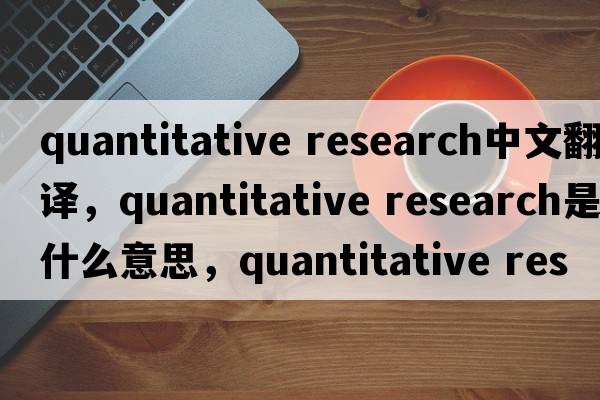整群抽样例子(stratified sample中文翻译,stratified sample是什么意思,stratified sample发音、用法及例句)

1、stratified sample
stratified sample发音
英: 美:
stratified sample中文意思翻译
常用释义:分层抽样:通过将总体分解为由相对均质单元组成的较小部分
分层抽样;[统计]分层样本
分层取样; 定样
stratified sample双语使用场景
1、Methods A self-designed questionnaire survey was used to investigate a cluster stratified sample of 1010 college students.───方法采用分层整群抽样的方法,对广州市1010名大学生进行问卷调查。
2、Methods a questionnaire survey was conducted to a clustered stratified sample of 1 785 children in Qingdao.───方法采取分层整群抽样的方法对青岛市1 785名儿童进行问卷调查。
3、Methods A cluster stratified sample of 1681 students ham Jianghan University were investigated by SDS.───方法采用分层整群抽样法抽取江汉大学1681名本科学生,采用抑郁自评量表(SDS)进行测评。
4、Select a sampling method. Do we us a random sample, stratified sample, or cluster sample?───选择一种取样方法,我们是随机抽样、分层抽样、还是整群抽样?
5、Methods: a cluster random stratified sample of 394 medical college students were investigated with a SCL-90 questionnaire.───方法:采取分层整群抽样的方法抽取394名医学生进行SCL - 90症状自评量表的问卷调查。
6、This would be an example of a stratified sample.───这就是一个典型抽样的例子。
7、A Stratified Sample Method of Scattering Source for Time-dependent Monte Carlo Transport───非定常粒子输运蒙特卡罗散射源分层抽样方法
stratified sample相似词语短语
1、striking example───引人注目的例子
2、biased sample───非正型标本;偏置取样;偏性样本
3、stratified───adj.分层的;形成阶层的;分为不同等级的;v.使成层(stratify的过去分词)
4、stratifies───vt.分层;成层;使形成阶层;vi.分层;成层;阶层化
5、stratified samples───分层样本
6、stratified random sample───分层随机样本
7、matched sample───相符样品
8、matched samples───匹配的样本
9、stratified random samples───分层随机样本
2、2023年10月26日雅思阅读考试真题及答案
您好,我是专注留学考试规划和留学咨询的小钟老师。在追寻留学梦想的路上,选择合适的学校和专业,准备相关考试,都可能让人感到迷茫和困扰。作为一名有经验的留学顾问,我在此为您提供全方位的专业咨询和指导。欢迎随时提问!https://liuxue.87dh.com/
雅思的最新一期考试,在上周末进行,大家对自己的考试有信心吗?跟着小钟老师来一起看看2023年10月26日雅思阅读考试真题及答案。
Passage1:蝴蝶保护色Copy your neighbour
参考答案:
A THERE’S no animal that symbolises rainforest diversity quite as spectacularly as the tropical butterfly. Anyone lucky enough to see these creatures flitting between patches of sunlight cannot fail to be impressed by the variety of their patterns. But why do they display such colourful exuberance? Until recently, this was almost as pertinent a question as it had been when the 19th-century naturalists, armed only with butterfly nets and insatiable curiosity, battled through the rainforests. These early explorers soon realised that although some of the butterflies’ bright colours are there to attract a mate, others are warning signals. They send out a message to any predators: “Keep off, we’re poisonous.” And because wearing certain patterns affords protection, other species copy them. Biologists use the term “mimicry rings” for these clusters of impostors and their evolutionary idol.
B But here’s the conundrum. “Classical mimicry theory says that only a single ring should be found in any one area,” explains George Beccaloni of the Natural History Museum, London. The idea is that in each locality there should be just the one pattern that best protects its wearers. Predators would quickly learn to avoid it and eventually all mimetic species in a region should converge upon it. “The fact that this is patently not the case has been one of the major problems in mimicry research,” says Beccaloni. In pursuit of a solution to the mystery of mimetic exuberance, Beccaloni set off for one of the megacentres for butterfly diversity, the point where the western edge of the Amazon basin meets the foothills of the Andes in Ecuador. “It’s exceptionally rich, but comparatively well collected, so I pretty much knew what was there, says Beccaloni.” The trick was to work out how all the butterflies were organised and how this related to mimicry.”
C Working at the Jatun Sacha Biological Research Station on the banks of the Rio Napo, Beccaloni focused his attention on a group of butterflies called ithomiines. These distant relatives of Britain’s Camberwell Beauty are abundant throughout Central and South America and the Caribbean. They are famous for their bright colours, toxic bodies and complex mimetic relationships. “They can comprise up to 85 per cent of the individuals in a mimicry ring and their patterns are mimicked not just by butterflies, but by other insects as diverse as damselflies and true bugs,” says Philip DeVries of the Milwaukee Public Museum’s Center for Biodiversity Studies.
D Even though all ithomiines are poisonous, it is in their interests to evolve to look like one another because predators that learn to avoid one species will also avoid others that resemble it. This is known as Miillerian mimicry. Mimicry rings may also contain insects that are not toxic, but gain protection by looking likes a model species that is: an adaptation called Batesian mimicry. So strong is an experienced predator’s avoidance response that even quite inept resemblance gives some protection. “Often there will be a whole series of species that mimic, with varying degrees of verisimilitude, a focal or model species,” says John Turner from the University of Leeds. “The results of these deceptions are some of the most exquisite examples of evolution known to science.” In addition to colour, many mimics copy behaviours and even the flight pattern of their model species.
E But why are there so many different mimicry rings? One idea is that species flying at the same height in the forest canopy evolve to look like one another. “It had been suggested since the 1970s that mimicry complexes were stratified by flight height,” says DeVries. The idea is that wing colour patterns are camouflaged against the different patterns of light and shadow at each level in the canopy, providing a first line of defence against predators.” But the light patterns and wing patterns don’t match very well,” he says. And observations show that the insects do not shift in height as the day progresses and the light patterns change. Worse still, according to DeVries, this theory doesn’t explain why the model species is flying at that particular height in the first place.
F “When I first went out to Ecuador, I didn’t believe the flight height hypothesis and set out to test it,” says Beccaloni.”A few weeks with the collecting net convinced me otherwise. They really flew that way.” What he didn’t accept, however, was the explanation about light patterns. “I thought, if this idea really is true, and I can work out why, it could help explain why there are so many different warning patterns in any one place. Then we might finally understand how they could evolve in such a complex way.” The job was complicated by the sheer diversity of species involved at Jatun Sacha. Not only were there 56 ithomiine butterfly species divided among eight mimicry rings, there were also 69 other insect species, including 34 day-flying moths and a damselfly, all in a 200-hectare study area. Like many entomologists before him, Beccaloni used a large bag-like net to capture his prey. This allowed him to sample the 2.5 metres immediately above the forest floor. Unlike many previous workers, he kept very precise notes on exactly where he caught his specimens.
G The attention to detail paid off. Beccaloni found that the mimicry rings were flying at two quite separate altitudes. “Their use of the forest was quite distinctive,” he recalls. “For example, most members of the clear-winged mimicry ring would fly close to the forest floor, while the majority of the 12 species in the tiger-winged ring fly high up.” Each mimicry ring had its own characteristic flight height.
H However, this being practice rather than theory, things were a bit fuzzy. “They’d spend the majority of their time flying at a certain height. But they’d also spend a smaller proportion of their time flying at other heights,” Beccaloni admits. Species weren’t stacked rigidly like passenger jets waiting to land, but they did appear to have a preferred airspace in the forest. So far, so good, but he still hadn’t explained what causes the various groups of ithomiines and their chromatic consorts to fly in formations at these particular heights.
I Then Beccaloni had a bright idea. “I started looking at the distribution of ithomiine larval food plants within the canopy,” he says. “For each one I’d record the height to which the host plant grew and the height above the ground at which the eggs or larvae were found. Once I got them back to the field station’s lab, it was just a matter of keeping them alive until they pupated and then hatched into adults which I could identify.”
1-5. E、B、G 、F 、D
6-E、TRUE、NOT GIVEN、FALSE、NOT GIVEN、TRUE
12-13. D、B
Passage2:CRS企业社会责任感
参考答案:
The moral appeal---arguing that companies have a duty to be good citizens and to “do the right thing” ---is prominent in the goal of Business for Social Responsibility, the leading nonprofit CSR business association in the United States.
A An excellent definition was developed in the 1980s ‘‘ Meeting the needs of the present without compromising the ability of future generations to meet their own needs.” The notion of license to operate derives from the fact that every company needs tacit or explicit permission from governments, communities, and numerous other stakeholders to do business. Finally,reputation is used by many companies to justify CSR initiatives on the grounds that they will improve a company’s image, strengthen its brand,enliven morale, and even raise the Value of its stock.
B To advance CSR, we must root it in a broad understanding of the interrelationship between a corporation and society. To say broadly that business and society need each other might seem like a cliché, but it is also the basic truth that will pull companies out of the muddle that their current corporate-responsibility thinking has created. Successful corporations need a healthy society. Education, health care, and equal opportunity are essential to a productive workforce. Safe products and working conditions not only attract customers but lower the internal costs of accidents. Efficient utilization of land, water, energy, and other natural resources makes business more productive. Good government, the rule of Jaw, and property rights are essential for efficiency and innovation. Any business that pursues its ends at the expense of the society in which it operates will find its success to be illusory and ultimately temporary. At the same time, a health society needs successful companies. No social program can rival the business sector when it comes to creating the jobs, wealth, and innovation that improve standards of living and social conditions over time.
C A company’s impact on society also changes over time, as social standards evolve and science progresses. Asbestos, now understood as a serious health risk, was thought to be safe in the early 1900s, given the scientific knowledge then available. Evidence of its risks gradually mounted for more than 50 years before any company was held liable for the harms it can cause. Many firms that failed to anticipate the consequences of this evolving body of research have been bankrupt by the results. No longer can companies be content to monitor only the obvious social impacts of today. Without a careful process for identifying evolving social effects of tomorrow, firms may risk their very survival.
D No business can solve all of society’s problems or bear the cost of doing so. Instead, each company must select issues that intersect with its particular business. Corporations are not responsible for all the world's problems, nor do they have the resources to solve them all. Each company can identify the particular set of societal problems that it is best equipped to helpresolve and from which it can gain the greatest competitive benefit. Addressing social issues by creating shared value will lead to self-sustaining solutions that do not depend on private or government subsidies. When a well-run business applies its vast resources, expertise, and management talent to problems that it understands and in which it has a stake, it can have a greater impact on social good than any other institution or philanthropic organization.
E The best corporate citizenship initiatives involve far more than writing a check: they specify clear, measurable goals and track results over time. A good example is GE’s program to adopt underperforming public high schools near several of its major U.S. Facilities. The company contributes between $250, 000 and $1 million over a five-year period to each school and makes in-kind donations as well GE managers and employees take an active role by working with school administrators to assess needs and mentor or tutor students. The graduation rate of these schools almost doubled during this time period. Effective corporate citizenship initiatives such as this one create goodwill and improve relations with local governments and other important constituencies. What’s more, GE’s employees feel great pride in their participation. Their effect is inherently limited though. No matter how beneficial the program is, it remains incidental to the company's business, and the direct effect on GE’s recruiting and retention is modest.
F Microsoft is a good example of a shared-value opportunity arising from investments in context. The shortage of information technology workers is a significant constraint on Microsoft’s growth, currently, there are more than 450,000 unfilled IT positions in the United States alone. Community colleges, representing 45% of all U.S. Undergraduates, could be a major solution. Microsoft recognizes, however, that community colleges face special challenges: IT curricula are not standardized, technology used in classrooms is often outdated, and there are no systematic professional development programs to keep faculty up to date. In addition to contributing money and products, Microsoft sent employee volunteers to colleges to assess needs, contribute to curriculum development, and create faculty development institutes. Note that in this case, volunteers and assigned staff were able to use their core professional skills to address a social need, a far cry from typical volunteer programs. Microsoft has achieved results that have benefited many communities while having a direct-and potentially significant-impact on the company.
G At the heart of any strategy is a unique value proposition: a set of needs a company can meet for its chosen customers that others cannot. The most strategic CSR occurs when a company adds a social dimension to its value proposition, making social impact integral to the overall strategy Consider Whole Foods Market, whose value proposition is to sell organic, natural, and healthy food products to customers who are passionate about food and the environment. Whole Foods’ commitment to natural and environmentally friendly operating practices extends well beyond sourcing. Stores are constructed using a minimum of virgin raw materials. Recently, the company purchased renewable wind energy credits equal to 100% of its electricity use in all of its stores and facilities, the only Fortune 500 Company to offset its electricity consumption entirely. Spoiled produce and biodegradable waste are trucked to regional centers for composting. Whole Foods’ vehicles are being converted to run on biofuels. Even the cleaning products used in its stores are environmentally friendly. And through its philanthropy, the company has created the Animal Compassion Foundation to develop more natural and humane ways of raising farm animals. In short, nearly every aspect of the company’s value chain reinforces the social dimensions of its value proposition, distinguishing Whole Foods from its competitors.
V、 viii、 iv、 vii、 i、iii、 ii
equal opportunity、internal cost
C、C、 A、 B
Passage3:沙漠造雨
参考答案:
A. Sometimes ideas just pop up out of the blue. Or in Charlie Paton’s case, out of the rain. “I was in a bus in Morocco travelling through the desert,” he remembers. “It had been raining and the bus was full of hot, wet people. The windows steamed up and I went to sleep with a towel against the glass. When I woke, the thing was soaking wet. I had to wring it out. And it set me thinking. Why was it so wet?”
B. The answer, of course, was condensation. Back home in London, a physicist friend, Philip Davies, explained that the glass, chilled by the rain outside, had cooled the hot humid air inside the bus below its dew point, causing droplets of water to form on the inside of the window. Intrigued, Paton-a lighting engineer by profession-started rigging up his own equipment. “I made my own solar stills. It occurred to me that you might be able to produce water in this way in the desert, simply by cooling the air. I wondered whether you could make enough to irrigate fields and grow crops.”
C. Today, a decade on, his dream has taken shape as giant greenhouse on a desert island off Abu Dhabi in the Persian Gulf ---the first commercially viable Version of his “seawater greenhouse”. Local scientists, working with Paton under a license from his
company Light Works, are watering the desert and growing vegetables in what is basically a giant dew-making machine that produces fresh water and cool air from sum and seawater. In awarding Paton first prize in a design competition two years ago,
Marco Goldschmied, president of the Royal Institute of British Architects, called it “a truly original idea which has the potential to impact on the lives of millions of people living in coastal water-starved areas around the world.”
seawater greenhouse as developed by Paton has three main both air-condition the greenhouse and provide water for front of the greenhouse faces into the prevailing wind so that hot dry air blows in through a front wall is made of perforated cardboard kept moist by a constant trickle of seawater pumped up from purpose is to cool and moisten the incoming desert cool moist air allows the plants to grow faster. And, crucially, because much less water evaporates from the leaves,the plants need much less moisture to grow than if they were being irrigated in the hot dry desert air outside the greenhouse.
air-conditioning of the interior of the greenhouse is completed by the second feature:the roof. It has two layers:an outer layer of clear polyethylene and an inner coated layer that reflects infrared radiation. This combination ensures that visible light can steam through to the plants, maximizing the rate of plant growth through photosynthesis but at the same time heat from the infrared radiation is trapped in the space between the layer, sand kept away keep the air around the plants cool.
F. At the lack of the greenhouse sits the third elements. This is the main water production ,the air hits a second moist cardboard wall that increases its humidity as it reaches the condenser,which finally collects from the hot humid air the moisture for irrigating the condenser is metal surface kept cool by still more seawater. It is the equivalent of the window on Paton’s Morcoccan s of pure distilled water form on the condenser and flow into a tank for irrigating the crops.
Abu Dhai greenhouse more or less runs ors switch everything on when the sun rises and alter flows of air and seawater through the day in response to changes in temperature, humidity, and windless days,fans ensure a constant flow of air through the greenhouse. “Once it is tuned to the local environment,you don’t need anyone there for it to work” says Paton. “We can run the entire operation off one 13-amp plug, and in the future we could make it entirely independent of the grid, powered from a few solar panels.”
ics point out that construction costs of around $4 a square foot are quite illustration, however, Paton presents that it can cool as efficiently as a 500-kilowatt air conditioner while using less than 3 kilowatts of electricity. Thus the plants need only an eighth of the Volume of water used by those grown conventionally. And so the effective cost of desalinated water in the greenhouse is only a quarter that of water from a standard desalinator, which is good economics. Beside it really suggests an environmentally - friendly way of providing air conditioning on a scale large enough to cool large greenhouses where crops can be grown despite the high outside temperatures.
27-31:YES、NO、YES、NOT GIVEN、 NO
32-36:hot dry air、moist、heat、condenser、pure distill water
37-40:fans、solar panels、construction costs、environmentally-friendly
希望以上的答复能对您的留学申请有所帮助。如果您有任何更详细的问题或需要进一步的协助,我强烈推荐您访问我们的留学官方网站 https://liuxue.87dh.com/ ,在那里您可以找到更多专业的留学考试规划和留学资料以及一对一的咨询服务。祝您留学申请顺利!
版权声明: 本站仅提供信息存储空间服务,旨在传递更多信息,不拥有所有权,不承担相关法律责任,不代表本网赞同其观点和对其真实性负责。如因作品内容、版权和其它问题需要同本网联系的,请发送邮件至 举报,一经查实,本站将立刻删除。














